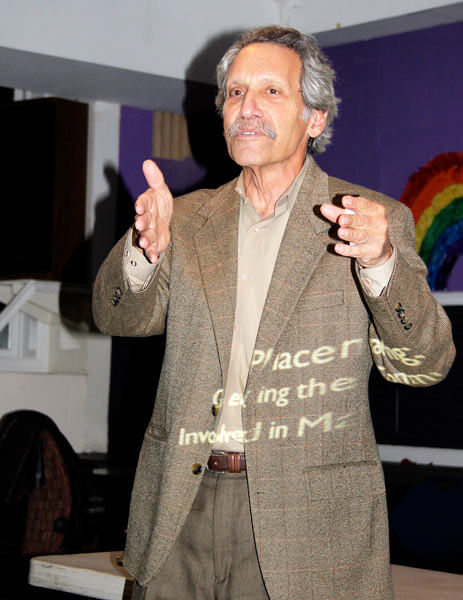By Rich Bockmann
Some called it the downtown, some referred to it as Main Street and others dubbed it the train station area. Some even suggested it may extend to the corner of Northern Boulevard.
Stakeholders in Douglaston’s commercial district met last Thursday night at the Community Church of Douglaston during the first of three public workshops that will eventually form the basis for a strategic action plan to revitalize business activity in the area.
Dorothy Matinale, president of the Douglaston Chamber of Commerce, said there were more than 50 businesses in the district, and community members stressed the need to strengthen local service businesses while still maintaining the area’s quiet character.
“I get fliers all the time from businesses in Great Neck,” said Ann Jawin, chairwoman of the Doug Bay Manor Civic Association.
Norman Mintz, a Pace University professor known as Dr. Downtown, was invited to speak by Victor Dadras, whose architecture firm was hired as a consultant by the Douglaston Local Development Corp. to form a plan to revitalize the business district.
Mintz said businesses had to do a better job of marketing themselves and recommended that the strategic action plan should consider positioning Douglaston as a small town within a big city.
Dadras said Douglaston was just one of 640 neighborhood commercial centers in the city and that it could capitalize on the nearly 2,000 Long Island Rail Road passengers who pass through the station each day.
Mintz told the crowd of about 40 he had spent the day walking the neighborhood and pointed to a number of solutions that had worked in revitalizing small-town business areas that he said could take hold in Douglaston.
“Downtown revitalization is one of those professions [in which] you have to deal with a lot of challenges,” he said, introducing the concept of “placemaking.”
“What can you do to make your downtown a better place for living?” he asked.
Mintz’s plan for placemaking was comprised of three aspects: outdoor spaces, indoor spaces and street events.
Communities could come together to design and build their own streetscapes, Mintz said, including trash receptacles, banners, planters, sculptures, murals and benches.
“The more the better, in my opinion,” he said of benches.
Mintz said empty storefronts provided an opportunity for community groups to come together on public art projects, and he showed a slide where schoolchildren had painted a streetscape on the windows of a vacant space.
He said Douglaston was unique in that PS 98 is located adjacent to the business area.
“Believe me folks, you don’t find that that often,” he said.
Indoor spaces could be used to hold art exhibitions, community meetings or even gathering places such as coffee shops the community could run as nonprofit organizations — an idea that struck a chord with those still lamenting the loss of the Douglaston Market.
“Farmers markets are becoming one of the most successful tools. They’re easy and cheap to set up,” Mintz said, acknowledging the neighborhood’s new city Greenmarket.
Some residents were concerned about the excess traffic more businesses would bring, while others said too much traffic left the neighborhood to do business in places like Great Neck, L.I., or Bell Boulevard.
“What we’re concerned with is preserving the scale,” Dadras said. “Vacant stores are not preserving the scale.”
Reach reporter Rich Bockmann by e-mail at rbockmann@cnglocal.com or by phone at 718-260-4574.



































